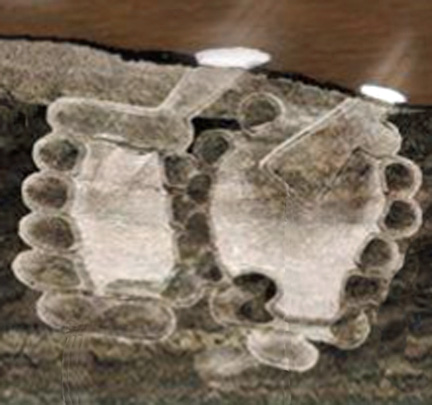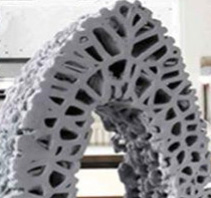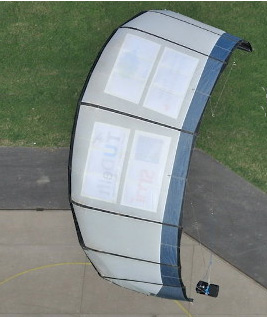|
Stressed by the cacophony of urban life? Want a quiet place far from the maddening crowd?
If so, consider No-View Mars Estates: 1 Bedroom, 1 Bath, $1 Billion.
Astronauts living on Mars would face numerous perils, including solar radiation, meteorites, and enormous temperature changes. Earth’s atmosphere largely shields us from these effects. But the thin Martian atmosphere cannot, so living underground might be the easiest way to mitigate these perils.
At NASA’s behest, TUD, the Technical University of Delft in the Netherlands, proposes robotically-constructed condominiums below the Martian surface. TUD envisions swarms of autonomous robots that could dig and build the habitats shown here.

The robots would dig tunnels that spiral downward and enclose a large central space, which is excavated later. As the robots dig, other machines convert extracted material into concrete. Robots would 3D-print that concrete on the walls of the final space, employing a honeycomb structure that provides maximum strength with minimal material and minimal printing time. Honeycombing also provides much needed insulation, as Martian surface temperatures range from +95ºF to –226ºF (+35ºC to –143ºC).
The tunnel entrances are left open for access and to admit sunlight.
TUD developed the 3D-printed concrete technology to produce buildings and other structures on Earth — the arch is seen here is an example.

Getting back to TUD’s Martian condos, the central space enclosed by tunnels would be progressively excavated as its walls are lined with printed concrete. When complete, the central space is filled with a bag inflated with gas of the proper composition and pressure to sustain people.
With a suitable habitat, the next critical needs are oxygen, water, energy, and food.
The Mars 2020 mission has recently demonstrated the production of oxygen from the carbon dioxide rich Martian atmosphere.
Reliably obtaining sufficient water — for human consumption, food production, and rocket fuel — remains a challenge at the top of NASA’s priority list.
With a carbon-dioxide-rich atmosphere and ample water, food production becomes possible.
Renewable energy can be obtained from sunlight and wind. TUD has also developed a unique approach to wind power. On Earth, and we expect on Mars as well, winds are strongest and most consistent far above the planet’s surface. TUD therefore employs kites that can fly much higher than any practical wind turbine tower. As shown here, their kite is shaped like a sail.

TUD’s kite system operates in cycles. A cycle begins with the kite near the ground with its tether wound onto a reel. The sail-shaped kite catches the wind, pulling the tether, which turns the reel with an attached generator, producing energy. When the tether is fully unreeled, one end of the kite is released and the kite becomes more like a flag, thereby reducing its drag by 80%. The tether is then reeled in, consuming 20% of the reel-out energy. The cycle ends when the tether is fully wound onto the reel.
TUD estimates their kites can attain a 60% capacity factor (average power divided by maximum power), twice that of many wind turbine systems. Additionally, the kite and tether return to the ground each cycle, while all the machinery remains on the ground, making maintenance easier and cheaper.
While the price tag might seem high, remember the real estate adage: it’s all about location, location, location.
Best Wishes,
Robert

June 2021
Note: Previous newsletters can be found on my website.
|